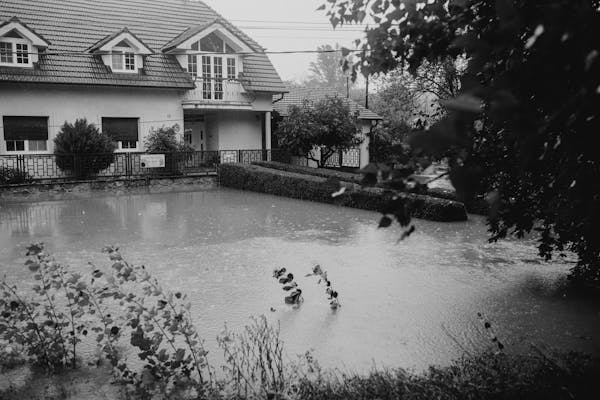Understanding Homeowners Insurance: What You Need to Know
Introduction
Homeowners insurance is a critical financial tool that protects one of your most significant investments—your home. This type of insurance provides coverage against various risks, including damage to the property and liability for accidents that occur on the premises. Understanding homeowners insurance can help you choose the right policy, ensure adequate coverage, and navigate the complexities of claims. This article delves into what homeowners insurance is, its types, coverage details, and the factors to consider when purchasing a policy.
Homeowners insurance provides coverage for damage to a home and its contents due to events like fire, theft, vandalism, and natural disasters. It also covers liability in case someone is injured on the property.
- Types of homeowners insurance:
- Standard homeowners insurance: Covers the home’s structure, personal belongings, liability, and additional living expenses if the home is uninhabitable.
- Flood insurance: Protects against flood-related damages (usually not included in standard policies).
- Earthquake insurance: Offers coverage for damages caused by earthquakes (often a separate policy or add-on).
- Importance: Homeowners insurance protects one of the most significant financial investments most people make, ensuring that repairs or replacements can be made in the event of damage or disaster.

What is Homeowners Insurance?
Homeowners insurance is a form of property insurance that provides financial protection against damages to your home and personal belongings. It typically covers the structure of the home, personal property within it, and liability for accidents that occur on your property. A standard homeowners insurance policy also includes coverage for additional living expenses (ALE) if you are temporarily unable to live in your home due to a covered loss.
Key Components of Homeowners Insurance
Homeowners insurance policies generally consist of several key components, which can vary by provider and policy type:
- Dwelling Coverage: This is the primary component of homeowners insurance, providing coverage for the physical structure of your home, including walls, roof, and built-in appliances. It typically covers damages from perils such as fire, wind, hail, or vandalism.
- Personal Property Coverage: This protects your personal belongings, such as furniture, electronics, clothing, and other items in your home. Coverage is usually provided at actual cash value (ACV) or replacement cost value (RCV). ACV takes depreciation into account, while RCV covers the full cost of replacing the items.
- Liability Coverage: This protects you from financial loss if someone is injured on your property or if you cause damage to someone else’s property. It covers legal expenses and any settlements or judgments against you, typically up to a specified limit.
- Additional Living Expenses (ALE): If your home becomes uninhabitable due to a covered event (e.g., fire or flood), ALE covers the costs of temporary housing, meals, and other necessary expenses while repairs are being made.
- Other Structures Coverage: This provides coverage for structures on your property that are not attached to your home, such as garages, sheds, fences, and pools.

Types of Homeowners Insurance Policies
Homeowners insurance comes in several policy forms, each tailored to different types of homes and coverage needs. The most common types include:
- HO-1 (Basic Form): This is a basic policy that provides limited coverage for specified perils, such as fire, theft, and vandalism. It is less common due to its limited protection.
- HO-2 (Broad Form): This policy offers broader coverage than HO-1, protecting against more perils, including falling objects, weight of snow or ice, and freezing pipes.
- HO-3 (Special Form): The most common homeowners policy, HO-3, covers the home against all perils except those explicitly excluded in the policy. Personal property is usually covered on a named-peril basis.
- HO-4 (Renters Insurance): This policy is designed for tenants and provides coverage for personal property and liability but does not cover the dwelling itself, as it is not owned by the renter.
- HO-5 (Comprehensive Form): This policy offers similar coverage to HO-3 but provides broader protection for personal property and typically uses replacement cost coverage rather than actual cash value.
- HO-6 (Condo Insurance): Specifically for condominium owners, HO-6 covers personal property and certain structural elements, depending on the condominium association’s insurance.
- HO-7 (Mobile Home Insurance): This policy is tailored for mobile or manufactured homes, providing coverage for the structure and personal belongings.
Factors Affecting Homeowners Insurance Premiums
Several factors can influence the cost of homeowners insurance premiums, including:
- Location: The geographic area where your home is located affects premiums. Homes in areas prone to natural disasters (e.g., floods, earthquakes) may have higher rates.
- Home Value and Replacement Cost: The value of your home and its estimated replacement cost play a significant role in determining premiums. Higher-value homes or homes with expensive materials may lead to higher rates.
- Coverage Limits and Deductibles: The amount of coverage you choose and the deductible you set can affect your premium. Higher coverage limits typically lead to higher premiums, while higher deductibles can lower your costs.
- Home Features and Safety: Homes with safety features such as security systems, smoke detectors, and updated electrical or plumbing systems may qualify for discounts. Conversely, older homes or those lacking safety features may incur higher premiums.
- Claims History: A history of frequent claims can lead to higher premiums, as insurers may view you as a higher risk.
- Credit Score: In many regions, insurance companies use credit scores as a factor in determining premiums. A higher credit score may lead to lower rates.

How to Choose the Right Homeowners Insurance
Choosing the right homeowners insurance policy involves several steps:
- Assess Your Needs: Determine the coverage you need based on the value of your home, belongings, and personal liability risk.
- Shop Around: Compare quotes from multiple insurance providers to find the best coverage and rates. Consider factors like customer service, claims handling, and company reputation.
- Understand Policy Terms: Read and understand the policy details, including coverage limits, exclusions, and deductibles. Ask questions if anything is unclear.
- Consider Bundling: Many insurers offer discounts for bundling homeowners insurance with other policies, such as auto insurance.
- Review Annually: Regularly review your homeowners insurance policy to ensure it continues to meet your needs, especially after significant life changes (e.g., renovations, purchasing new belongings).
Conclusion
Homeowners insurance is a vital component of protecting your home and personal belongings. By understanding its key components, types of policies, and factors affecting premiums, you can make informed decisions to ensure adequate coverage. Regularly reviewing and updating your policy will help you navigate the complexities of homeownership while safeguarding your financial investment and peace of mind. Whether you’re a first-time homeowner or an experienced property owner, having the right homeowners insurance can provide the security and confidence you need to enjoy your home fully.
